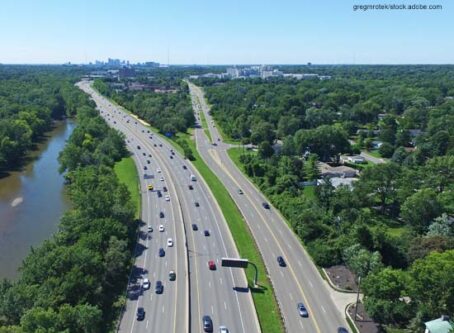Pilot Flying J wants input on parking directly from drivers
Drivers’ concerns and anxiety over a shortage of truck parking has increased since the ELD mandate went into effect. With 90 percent of truck parking coming from private truck stops, a lot of those concerns are directed at some of the bigger truck stop chains. Pilot Flying J is giving truckers an opportunity to voice those concerns directly.
During the 2018 Mid-America Trucking Show, Pilot Flying J was featuring its Truck Care service and myPilot app (more on that later). However, during an interview with Land Line, the conversation shifted to an issue that is plaguing the industry: parking.
“It’s not getting better,” said Tyler Tanaka, PFJ director of digital and innovation. “The sheer number of drivers that are on the road compared to the number of parking spaces presents a huge challenge to plan your day, to have a stress-free day, to extend your mileage. We completely understand.”
In the first quarter of 2018, PFJ has opened six locations in North America, including more than 200 new truck parking spaces. The three latest additions have a combined 105 truck parking spaces, none of which include Prime Parking (i.e., paid, reserved spots).
However, many larger locations do include Prime Parking. Typically, the number of Prime Parking spots are relatively small. According to PFJ, reserved parking spots make up only 4 percent of their total parking nationwide.
The percentage of reserved parking spots will vary from location to location. For example, the Kansas City, Mo., location includes 121 public spaces and 20 Prime Parking spaces (14 percent of total spaces). In Little Rock, the PFJ has 110 spaces, with 10 of those Prime Parking, or about 9 percent. Meanwhile, 20 of 74 total spots at the Castaic, Calif., location are Prime Parking, more than a quarter of spaces.
Although some truckers may take exception to reserved, paid parking, Tanaka explained the total number of reserved spaces nationwide is small. Furthermore, the current environment created by regulations has opened a market of truckers who need a guaranteed space.
“Especially with hours of service and ELDs coming on board, parking is getting worse now,” Tanaka said. “Drivers are being forced to get off the road earlier and cutting their drive time short, because they can’t guarantee they’re going to have a parking space.”
One way PFJ is trying to help is with its myPilot app. Currently, PFJ is testing out live parking for the app at 31 West Coast locations. Using MicroRadar sensors installed in the ground at each parking spot, drivers can find out how many public and reserved spaces are available in real time. As soon as a truck exits a spot, the app will instantly indicate the opening. When a truck takes a spot that too will be reflected almost instantaneously.
Left: Live Parking myPilot app feature allows drivers to view parking availability in real time. Right: Drivers can find nearby parking with the parking tab.
Another new feature on the myPilot app is a “parking” tab. Simply click the parking tab and the app will give you a breakdown of nearby PFJ parking based on your location.
At the end of the day, it is all about what the drivers want and need. That is why PFJ has set up a unique email address for truck parking. PFJ wants to hear about how the company can improve the parking situation directly from the truckers. Drop them a message at HelpMePark@PilotFlyingJ.com, and let PFJ know what it can do to improve the parking experience.









